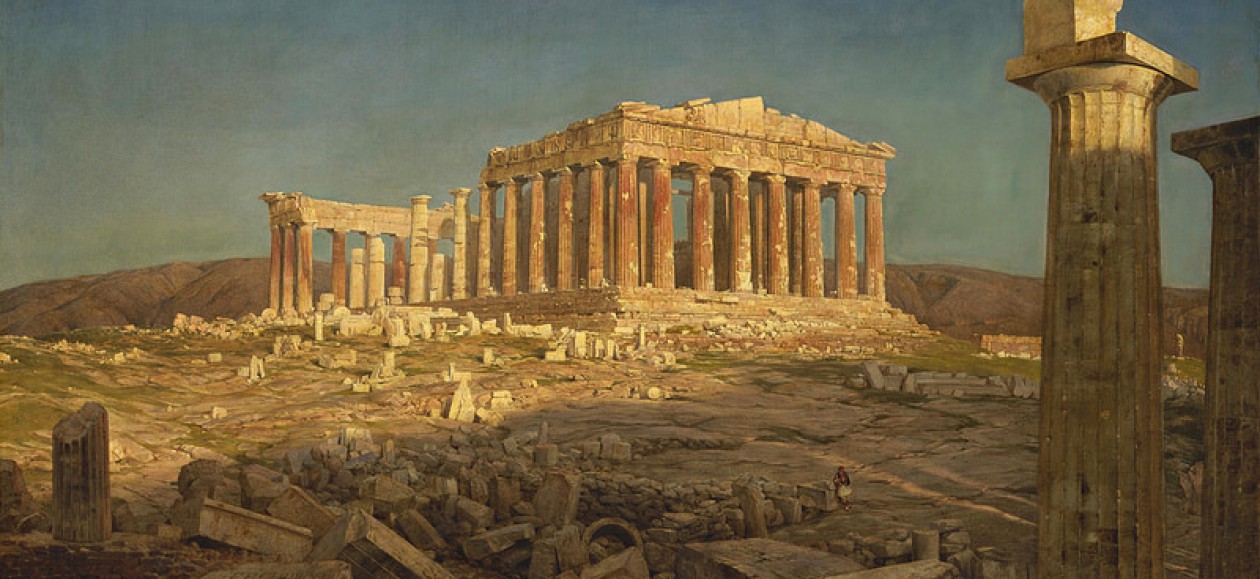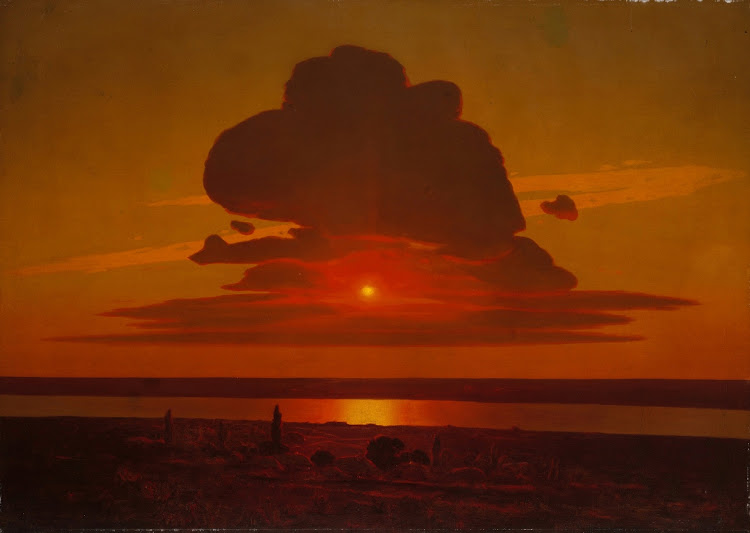Arkhip Ivanovich Kuindzhi (or Arkhip Kuinji; Russian: Архи́п Ива́нович Куи́нджи; Ukrainian: Архип Іванович Куїнджі; January 27, 1842(?) – July 24, 1910) was a Russian landscape painter.
Arkhip Kuindzhi was born in January 1841 in Mariupol (present-day Ukraine), but he spent his youth in the city of Taganrog. He grew up in a poor family, and his father was a Greek shoemaker Ivan Khristoforovich Kuindzhi (sometimes spelt Emendzhi). Arkhip was six years old when he lost his parents, so that he was forced to make his living, working at the church building site, grazing domestic animals, and working at the corn merchant’s shop. During the five years, from 1860 to 1865, Arkhip Kuindzhi worked as retoucher in the photo studio of Isakovich in Taganrog. Kuindzhi tried to open his own photographer’s studio, but without success. After that Kuindzhi left Taganrog for Saint Petersburg.
He studied painting mainly independently and in St.Petersburg Academy of arts(from 1868; the full member since 1893). He was co-partner of mobile art exhibitions (Peredvizhniki, a group of Russian realist artists who in protest to academic restrictions formed an artists’ cooperative, which evolved into the Society for Traveling Art Exhibitions (Peredvizhniki in 1870. During this early period Kuinczhy felt Ivan Aivazovsky‘s influence.
In 1872 the artist left the academy and worked as a freelancer. The paintingNa ostrove Valaam (On the Valaam Island) was the first artwork, which Pavel Tretyakov acquired for his art gallery. In 1873, Kuindzhi exhibited his paintingThe Snow, which received the bronze medal at the International Art Exhibitionin London in 1874. In the middle of the 1870s he created a number of paintings in which the landscape motif was designed for concrete social associations in the spirit of Peredvizhniki (Forgotten village, 1874; Chumatski path, 1875; both – in Tretyakov gallery).
In his mature period Kuindzhy aspired to transfer the most expressive on illumination of a condition of the nature. He applied composite receptions (high horizon, etc.), creating panoramic views. Using light effects and intense colors shown in main tones, he depicted the illusion of illumination (Evening in the Ukraine, 1876; Birch Grove, 1879; After a thunderstorm, 1879; all three are in Tretyakov Gallery; Night on Dnepr, 1880 in Russian museum, St.Petersburg). His later works are remarkable by decorative effects of color building.

